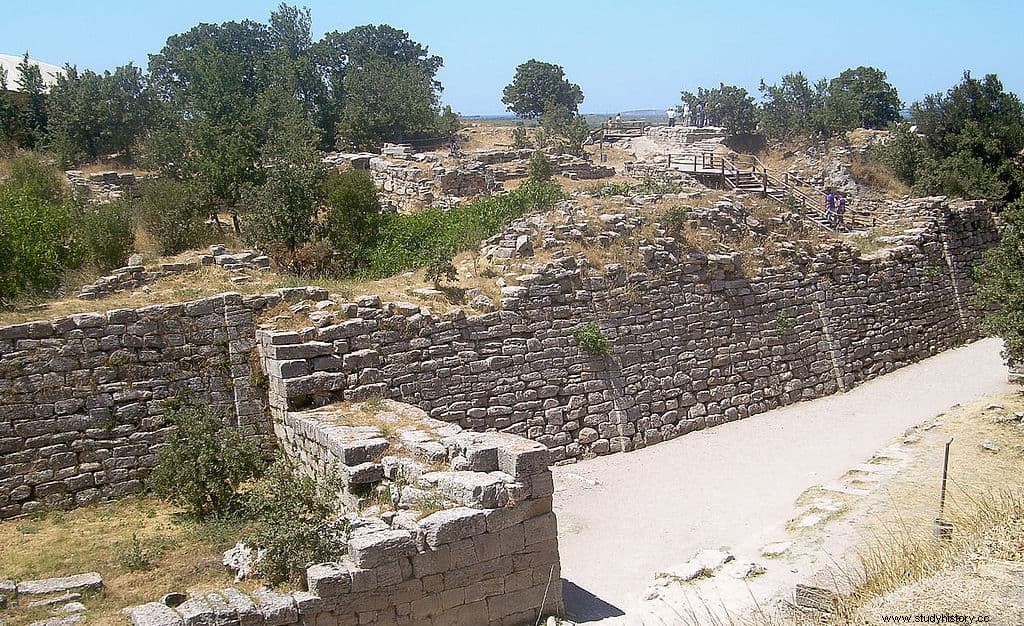To this day no one can say with absolute certainty whether the Hisarlik site on the north coast of Anatolia is the Homeric Troy or on the contrary it is another city, perhaps the Wilusa Hittite (the only written document found at the site is a cylinder with a Luwian inscription). In any case, when Heinrich Schliemann began to excavate it in 1873 he was convinced that there he would find the remains of the city described by Homer in the Iliad .

However, he was not the first to come up with the idea. In fact, seven years before Schliemann's arrival, another archaeologist had carried out excavations, on a much smaller scale, on that hill. His name was Frank Calvert and, despite the fact that his work was essential in the discovery of Schliemann's Troy, today he has been relegated almost to oblivion.
He had been born in Malta in 1828, into a British family where he was the youngest of seven children. One of them, Federico, who was a consular official in Anatolia, bought in 1847 a huge farm of more than 8 square kilometers in the place called Akca Koy, and which also included part of Hisarlik hill.
It must not have been a coincidence because it had been some 25 years since the geologist Charles Maclaren had published his Dissertation on the topography of the Trojan plain , in which he pointed out that the hill of Hisarlik must be the site of the Homeric Troy.
Frank helped his brother Federico with consular work, sometimes substituting for him as acting British consul. From 1874 he also filled the position vacated by another of his brothers, James, as consular agent for the United States. 
While fulfilling his diplomatic duties, Calvert conducted excavations on his family property, searching for Homer's Troy. When Schliemann arrived in Anatolia in 1870 he initially believed that the mythical city was on a hill south of Hisarlik called Pinarbasi. But he found nothing, and he was about to give up when Calvert suggested in 1873 that he try a mound on his family estate, Hisarlik Hill.

Calvert had already excavated there, but he had never delved deep enough to get to the Bronze Age layers. Schliemann accepted the suggestion, and the rest is history.
Frank Calvert died in 1908 without him ever being officially associated with the discovery of Troy. Schliemann himself in his writings would minimize his role by removing all prominence. Furthermore, since ownership of the mound was divided, the western half belonging to the Ottoman government and the eastern half belonging to the Calvert family, some of Schliemann's discoveries occurred in the latter part.
For this reason, since 1996 the descendants of the Calverts have been demanding, without success, that what they consider theirs be returned to them. It is known, for example, that some ceremonial axes that Schliemann hid and sent to Berlin were discovered in the Calvert area in 1890. In 1994 these axes, thought to be lost, appeared in the Pushkin Museum in Moscow, where they probably arrived after the Second World War.

According to the claims, Frank Calvert was not aware of all the finds and their locations, and as Schliemann's documentation was sometimes suspect, they are entitled to claim other treasures which, they believe, were not divided equally with Frank. .
